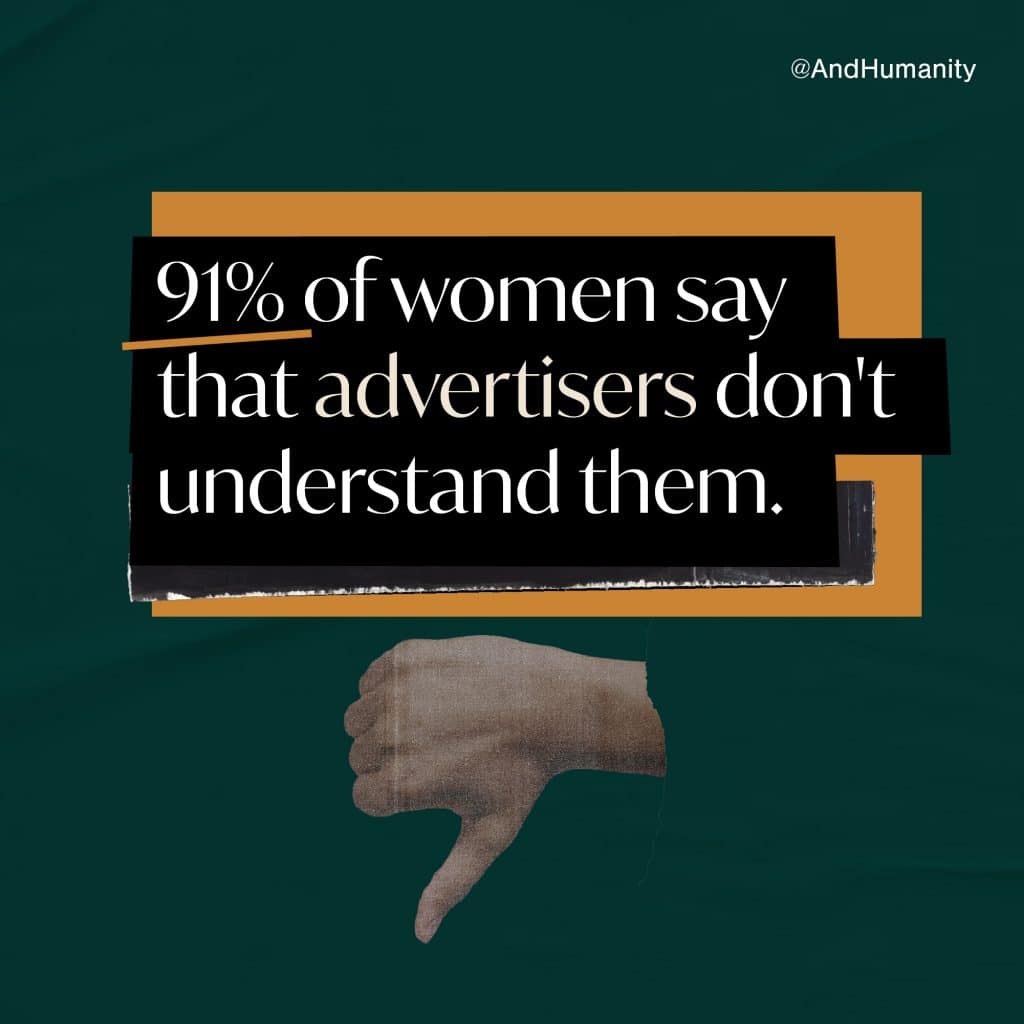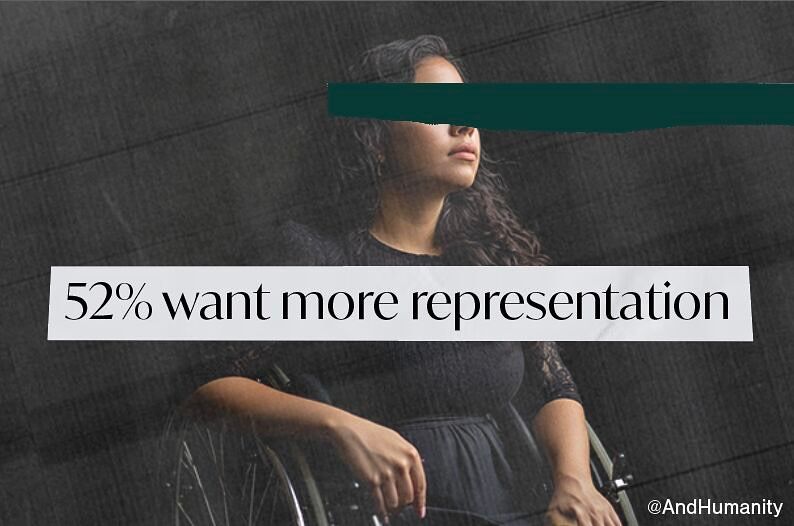Even though Women’s History Month ended a couple weeks ago, it’s worth noting that women are up against the patriarchy 365 days of the year. The advertising industry is a perfect encapsulation of this issue. Despite women driving the majority of consumer purchasing decisions and representing a significant share of the global population, the advertising industry continues to fall short in authentically representing and connecting with them.
Here are 12 Statistics that prove the industry is missing the mark with women:
- 91% of women say that advertisers “don’t understand them”.
- 66% of women don’t connect with what they see in marketing.
- 60% of women believe that marketing has an outdated view of women.
- 81% of women worldwide consider diversity and inclusion important at a personal level
- 77% say these values influence their purchase decisions.
- Only 5% of ads featuring women in non-traditional roles
- Only 16% showing women of diverse body sizes
- 75% only feature young women
- Older women are nearly invisible in advertising, appearing in just 1.5% of ads—and older men are 25% more likely to be featured
- Men are 23% more likely to appear in professional roles than women, and 82% more likely to be shown in physical (sporting) roles
- In 2023, women with the darkest skin tones received only 2.6% of total ad spend, and ads featuring people over 60 received just 1.2% of total ad spend
- Only 3.4% of ads show women in leadership, and 8.5% in professional settings
And beyond the ads themselves, the industry workplaces aren’t much better:
- 40% of women in advertising report experiencing harassment at some point in their careers, with over half saying their gender negatively impacts their workplace experience.
- One in six women in the advertising industry is considering leaving due to a lack of inclusion or discrimination.
- Female representation in advertising, media, and tech dropped below 50% for the first time since 2018, with women disproportionately leaving these industries
- 37% of ad industry employees are women, down from 50% pre-pandemic, reflecting a significant decline in female representation
- Women in marketing are 16% less paid on average than their male counterparts, which is double the national gender pay gap average
With all this said, statistics also prove that advertising that counters stereotypes and prioritizes inclusion is just good for business:
- Ads that challenge stereotypes are 1.7 times more likely to score highly for positive portrayal of women and are more likely to drive both short-term sales and long-term brand loyalty.
- Inclusive advertising leads to a 40% increase in consumer trust and a 25% lift in brand affinity
- Inclusive advertising that authentically portrays women drives 3.5% higher short-term sales and 16% higher long-term sales, with a 62% higher likelihood of being a consumer’s first choice and 15% higher customer loyalty
The advertising industry has a long way to go when it comes to dismantling the patriarchy, but the path forward is clear. The data speaks volumes: inclusive advertising not only fosters trust and loyalty but also drives significant business growth. By challenging outdated stereotypes and embracing inclusion, brands and workplaces can move beyond performative gestures and commit to real change – because when women win, everyone wins.
Source of Statistics:
- Women in Advertising | Ipsos
- Ipsos Views: Women in Advertising (PDF)
- SeeHer and Ipsos Whitepaper
- A Woman’s Worth: How Better Portrayal is Good for Business | Ipsos
- Positive Depictions of Females in Advertising | HispanicAd
- Marketing’s Gender Pay Gap | LinkedIn
- Breaking Barriers with Female Forward Advertising | RTL AdAlliance
- Marketing and the Gender Pay Gap | LinkedIn
- Women in Digital Marketing: Breaking Down Barriers | LinkedIn
- New research proves that inclusive advertising boosts sales and brand value | UN Women
- New research proves inclusive advertising boosts sales and brand value | Saïd Business School
- How diversity in advertising can unlock brand growth | Kantar
Learn more about what we do and who we do it for on our services page.
Sign up for our newsletter here for more insights on marketing, advertising, communications, and how the industry intersects with inclusion.









